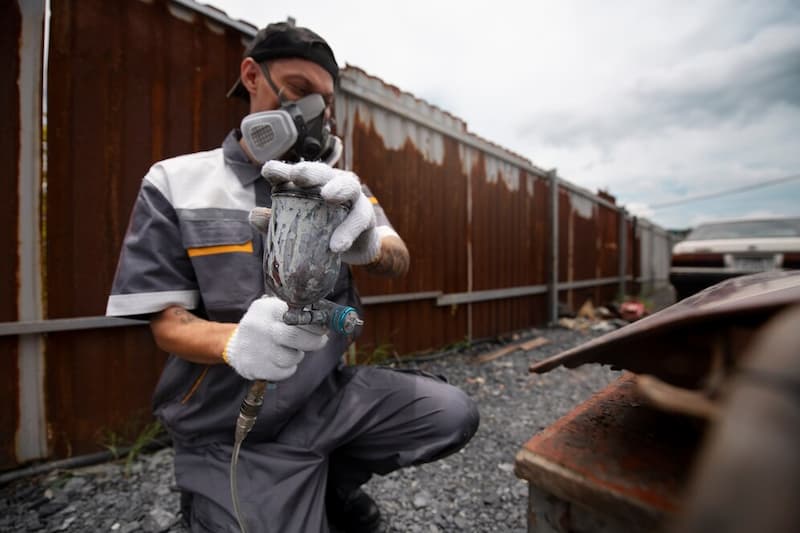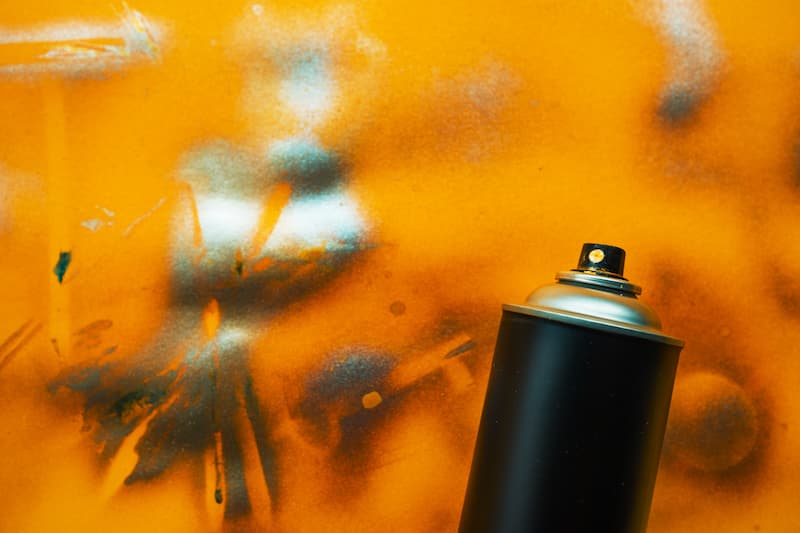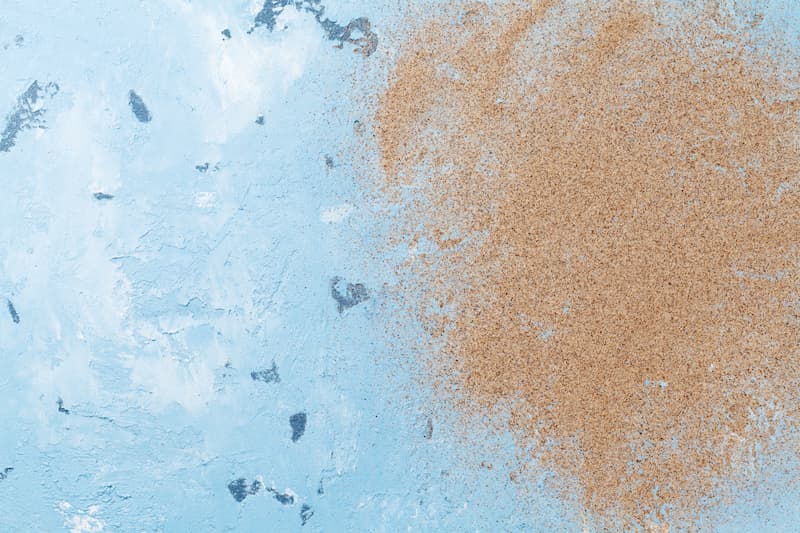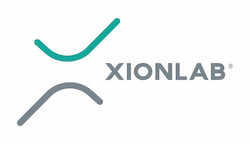Rust can be one of the biggest enemies of metal surfaces, especially in automotive parts, outdoor structures, and equipment that are regularly exposed to moisture. Over time, rust compromises the strength and integrity of metal, leading to costly repairs or replacements. With the right rust converter spray, however, you can combat rust effectively and protect metal surfaces for the long term. In this detailed guide, we will explore everything you need to know about maximizing the effectiveness of rust converter spray and ensuring long-lasting protection.
What is a Rust Converter Spray and How Does It Work?

Rust converter spray is a chemical solution designed to stop rust on metal surfaces by converting rust (iron oxide) into a stable, non-corrosive substance. This is particularly useful for automotive rust, fences, tools, and other metal structures. Instead of removing rust completely, a rust converter chemically transforms it, making it easier to protect the surface with additional coatings like primer spray or paint.
1. How a Rust Converter Chemically Converts Rust on Iron or Steel Surfaces
Rust converters work through a chemical reaction with the rust (iron oxide), transforming it into a more stable compound, typically iron tannate or iron phosphate. This new substance forms a protective layer on the surface, halting further corrosion. This chemical process is especially important for iron or steel surfaces, where rust can quickly compromise structural integrity.
2. How Rust Converter Spray Paint and Primer Work Together
After the rust is converted into a stable compound, the surface becomes ready for further treatment. The black coating that forms can be used as a primer, allowing for easy application of spray paint or additional metal primers. Applying a primer spray after rust conversion enhances the surface’s protection, preventing new rust from forming and ensuring a durable finish.
Preparing Metal Surfaces for Rust Converter Spray
Preparing the metal surface before applying rust converter spray is crucial for achieving the best results. Proper preparation ensures that the converter bonds with the rust effectively, forming a protective layer. Failure to prepare the surface can lead to incomplete rust conversion, leaving parts of the metal vulnerable to further corrosion.
Steps to Prepare Automotive Rust and Repair Metal with a Rust Convertor to Prevents Future Rust
When dealing with automotive rust, surface preparation is particularly important. Start by cleaning the area to remove dirt, grease, and loose rust flakes. A wire brush or sandpaper should be used to eliminate flaky rust. Sanding also helps smooth the metal surface, allowing the rust converter to bond effectively with the rust. For deeper rust spots on the car body, use medium-grit sandpaper to ensure proper adhesion. The better the surface preparation, the more effective the converter will be in repairing and protecting the metal.
2. How Xionlab Rust Converter Convert and Prevent Future Rust
Two of the most popular rust converter sprays, Xionlab Rust Converter is highly effective in converting rust and preventing future rust from forming. These products chemically bond to the rust and neutralize it, stopping corrosion. After the conversion, applying a protective topcoat or primer spray ensures long-lasting protection, especially in automotive rust repair.
3. Using Water-Based and Quick-Drying Rust Reformers for Durable Protection
Many rust converters, such as water-based rust reformers, offer a quick-drying solution that makes it easier to apply additional coatings. These quick-drying rust converters allow for faster rust repair, making them ideal for urgent automotive projects or metal structures that require immediate attention. By using a water-based rust reformer, you can ensure a fast-acting, durable solution that chemically converts rust and allows for easy application of topcoats.
Best Practices for Applying Rust Converter Spray
Applying rust converter spray correctly is essential to ensure the treated surface remains protected for as long as possible. Here are some best practices to follow when applying rust converter spray to automotive or other metal surfaces.
1. Applying Rust Converter Primer for a Durable Matte Black Finish
After converting the rust, the black coating formed by the rust converter acts as a protective primer layer. For added durability, it’s recommended to apply a primer spray or topcoat, especially if the surface will be exposed to moisture. The result is often a durable matte black finish that not only protects the metal but also improves its aesthetic appeal.
2. Achieving Long-lasting Automotive Rust Repair with VHT Rust Convertor
The VHT Rust Convertor is highly rated for automotive rust repair. It transforms rust into a black, paintable surface, which makes it easier to apply spray paint or other protective coatings. To achieve long-lasting results, ensure the rust converter is applied evenly and allowed to dry completely before applying a topcoat. This method ensures long-term protection against future rust and corrosion.
3. Maximizing Rust Converter’s Ability to Prevent Future Rust on Iron or Steel
Rust converters are designed not only to treat existing rust but also to prevent future rust from forming. For iron or steel surfaces, apply multiple thin coats of rust converter spray, allowing each coat to dry before reapplying. This process ensures that the entire surface is adequately covered, providing a long-lasting barrier against corrosion.
4. Quick Drying and Water-Based Rust Convertor for Faster Rust Repair
For quick projects, a quick-drying rust converter can significantly reduce the time required for repairs. Water-based rust converters offer faster drying times, making them ideal for projects where time is of the essence. These converters are easy to apply and dry to a black coating within minutes, allowing you to move quickly to the next stage of rust repair, such as applying a topcoat or additional protective layers.
How Rust Converter Spray Transforms Surfaces
The transformation that rust converter spray creates on metal surfaces is both chemical and protective. As soon as you apply the spray to a rusted surface, the chemical reaction begins, converting iron oxide into a stable, non-corrosive compound. This compound typically turns black, forming a protective barrier that prevents future rust from forming.

For automotive rust or other heavy-duty applications, the protective barrier is essential for ensuring the longevity of the treated surface. Once converted, the rust is effectively “sealed,” and you can apply a metal primer or spray paint to further protect the surface. The converted rust is stable enough to paint over, making it easier to finish the project.
Rust Convertor vs. Rust Remover: Which One is Better?
Rust converters and rust removers serve different purposes, and understanding their differences can help you choose the right product for your needs.
Rust Converter: This product chemically converts rust into a stable, non-corrosive layer. It is ideal for applications where the rusted metal surface does not need to be stripped down to bare metal. Rust converters are commonly used in automotive repair, metal restoration, and industrial applications. They work by neutralizing the rust and providing a surface that is ready for topcoat or metal primer application.
Rust Remover: A rust remover, on the other hand, physically strips away rust from the surface, exposing bare metal. This product is better suited for situations where the goal is to completely remove rust before applying any new coatings. However, rust removers require more surface preparation, including cleaning, sanding, and immediate application of a rust-inhibiting primer to prevent future corrosion.
In most cases, using a rust converter is more convenient because it allows you to treat and convert rust without needing to strip away the surface. This makes it easier to proceed with additional treatments like primer spray or a protective topcoat.
Maximizing the Effectiveness of Rust Converter Spray: 7 Essential Tips
To achieve the best possible results with rust converter spray, follow these seven tips:
- Clean Thoroughly Before Application: Ensure the surface is free of debris, dirt, and loose rust particles.
- Apply in Thin, Even Coats: Multiple thin coats ensure better coverage and prevent drips.
- Allow Proper Drying Time: Give the converter at least 24 hours to cure before applying any additional coats or topcoats.
- Test on a Small Area: Before applying to the entire surface, test the rust converter on a small section to ensure compatibility.
- Use Primer Spray for Enhanced Protection: After applying the rust converter, use a high-quality primer spray to add another layer of protection. This is especially important in automotive rust repair.
- Consider Weather Conditions: Apply in dry, temperate weather for the best results.
- Follow Manufacturer’s Instructions: Different products may have specific instructions for curing time and application methods, so always refer to the manufacturer’s guidelines.
Maintaining Surfaces After Rust Conversion

After treating your surface with rust converter spray, proper maintenance is crucial for long-lasting rust protection. Regularly inspect treated areas, especially automotive surfaces exposed to moisture and road salt. To prevent further rust, apply a top coat, such as a durable matte black finish or enamel, after the rust converting process. For rusty spots, reapply the rust destroyer spray if rust returns. Routine washing and waxing also help maintain treated surfaces. Using an aerosol spray ensures easy application and continued protection.
Customer Reviews: Best Rust Converter Sprays for Automotive and Metal Use
Several rust converter sprays are highly rated for treating rust and offering long-term protection:
Xionlab: Fast-drying and ideal for use on automotive rust, it converts rust into a paintable surface and ensures protection against rust.
VHT Rust Convertor: With a durable matte black finish, it provides inert protection, ideal for addressing rust on metal surfaces.
POR-15: Known for its thick protective coating, it’s intended for heavy rust, offering strong, long-term protection.
Rust Kutter: A quick-drying solution, it easily converts rust, allowing you to simply brush or paint over the treated surface.
Customer reviews can help you choose the right product for your rust treatment needs.
Comparing the Best Rust Converter Products on the Market
When selecting the right rust converter spray, consider factors like ease of use, drying time, and the type of surface you’re treating. Xionlab Rust Converter is highly recommended for automotive rust, while POR-15 is a top choice for industrial or heavy-duty applications.
For those who need quick results, Rust Kutter is a reliable option due to its fast-drying properties. Each product has its unique strengths, so choosing the best one depends on the level of rust, the type of metal surface, and the level of protection required.
FAQ Section on Rust Converter Sprays
By following these detailed steps and best practices, you can maximize the effectiveness of your rust converter spray and ensure long-lasting protection for your metal surfaces. Whether you’re dealing with automotive rust or protecting metal fences and tools, using the right rust converter spray, along with proper preparation and maintenance, will keep your surfaces rust-free for years to come.



